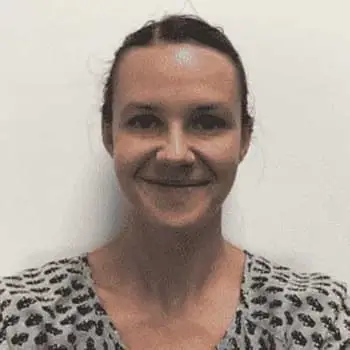K2/Spice use can lead to addiction and uncomfortable withdrawal symptoms. Learn more about treatment options for K2/Spice addiction in South Florida.
There are many different options available when it comes to drug treatment for K2/Spice use. For example, people may opt for inpatient or outpatient rehabilitation programs, or they may choose a short-term hospitalization instead.
Picking a treatment is very subjective — what works for one person may not work for another. Figuring out how to weigh the benefits and downsides of each treatment or rehab option is crucial. Additionally, if someone has relapsed a few times on Spice/K2, it’s important to look at why previous programs failed in order to find one that works in the future.
K2/Spice Addiction Treatment and Rehab Options
In general, almost all treatment programs offer a combination of different recovery strategies that help people maintain sobriety and return to their daily lives. Spice rehab can be directly tailored to a person’s needs, including whether they have been diagnosed with a co-occurring mental health condition.
Because K2/Spice is a relatively new drug, there has not been much research about the effectiveness of certain addiction treatments or rehab options. However, there are many similarities between K2/Spice addiction and marijuana addiction since both substances act on the cannabinoid receptors in the brain.
Treatment Can Be Life Changing. Reach out today.

Regardless of the treatment or rehabilitation program a person chooses, they will first be evaluated by medical professionals or an addiction specialist to assess the severity of their drug addiction. People who have not yet gone through the withdrawal process must decide whether they want to detox at home or at a facility. They must also decide if they would like medication to help ease uncomfortable withdrawal symptoms.
Medically Assisted Detox
Detox is often the first and one of the most difficult steps in the recovery process. To help overcome withdrawal symptoms, it is highly recommended that people attend a facility for medical detox. Those who choose to detox at home without prescribed medication may be at a higher risk of relapsing. Having the constant support of medical staff during the withdrawal process can help prevent relapse.
Importantly, medically assisted detox alone is unlikely to change a person’s behavior or drug misuse. Even at intake, there must be policies or incentives in place to help keep patients engaged enough to continue the recovery process.
Detox only helps someone completely rid their body of K2/Spice. It does not fix the underlying causes of addiction, which are often unique and complex. Helping an individual address the causes of their K2/Spice addiction requires additional treatment.
Partial Hospitalization
One treatment option for people struggling with K2/Spice addiction is known as partial hospitalization. Partial hospitalization programming (PHP) requires that patients receiving treatment return home in the evening while receiving full care during the day. PHPs are usually a combination of short-term outpatient rehab and both individual and group therapy. Additionally, patients have access to medical professionals during this time.
Inpatient Rehab
Another highly recommended option for K2/Spice addiction is inpatient drug rehab. Inpatient rehab is recommended for individuals who have already detoxed or who have relapsed several times. Most facilities offer 24-hour supervision or access to medical staff, medical and mental health evaluations and individual and group therapy. Many facilities also emphasize proper nutrition and recreation during a patient’s stay.
Outpatient Rehab
People struggling with K2/Spice abuse may opt to participate in outpatient rehab instead of an inpatient program. Outpatient rehab is typically recommended for people who have already gone through the detox process and do not require 24/7 supervision. People participating in outpatient rehab may return to their homes or a sober living community in the evening. Typically, treatment occurs during the daytime at a medical facility. Like inpatient rehab, outpatient rehab may include consultations with medical staff and treatment that includes medication and behavioral therapy.
Dual Diagnosis
During the initial evaluation, the medical staff will determine whether the patient has a co-occurring mental health condition. Drug use and mental health can directly influence each other. Drug misuse is sometimes caused by the physical addiction to the drug, but a person’s mental health can have a large impact on whether they are able to fully recover.
Assessing an entire person, including their home life and family background, is critical during addiction recovery. Mental health and drug abuse treatment may involve medication management or different types of cognitive behavioral therapy. Some examples of co-occurring disorders with K2/Spice addiction include:
- Depression
- Anxiety disorders
- Post-traumatic stress disorder (PTSD) or acute stress disorder (ASD)
- Attention-deficit hyperactivity disorder (ADHD)
- Mood disorders
- Personality disorders
- Psychotic disorders
Studies show that 6 in 10 people with a substance use disorder like K2/Spice addiction struggle with a co-occurring mental health condition. These statistics stress the importance of treating mental health disorders as well as addiction.
Aftercare
Life in recovery comes with many challenges, so addiction aftercare is one of the most important aspects of the recovery process. Without sufficient planning or consideration of aftercare treatment, a patient may struggle to maintain sobriety.
Aftercare is a time when people return to their normal lives after completing a treatment program. However, maintaining friendships with people who still use drugs like K2/Spice can be extremely detrimental to all the progress a person made in rehab. Aftercare may include:
- Maintenance medication, if necessary
- Continued behavioral therapy outside of rehab
- Group therapies or 12-step programs
- Sober living
- Family support
- Creating a relapse prevention plan
Addiction Therapies
Group and individual therapy and sometimes couples or family therapy are critical components of many different rehab programs. Drug addiction therapy often focuses on healing the whole person. For example, cognitive behavioral therapy for addiction teaches people coping strategies and how to change negative behavioral and thought patterns into more constructive and positive ones. Other examples of drug addiction therapies for K2/Spice addiction include:
- Dialectical behavioral therapy
- Mindfulness-based therapy
- Recreational therapy
- Music therapy
- Motivational enhancement therapy
How Long Does Drug Rehab Take?
The length of drug rehab depends upon many factors, such as the severity of a person’s addiction, how many times they’ve relapsed and the amount of the drug they use. Additionally, the length depends on a patient’s medical evaluation, whether they must go through withdrawal and the type of rehabilitation program they choose. Generally, PHPs take less time than outpatient or inpatient rehab.
General recommendations for the length of different treatments include:
Detox: 1-2 Weeks
PHPs: Several weeks to a month
Inpatient Rehab: 30-90 days, sometimes longer
Outpatient Rehab: 30-90 days, sometimes longer
Addiction Therapies: During rehab and indefinitely
Aftercare: Indefinitely
Many medical professionals are starting to view addiction as a chronic disease that must be managed in more effective ways. Some studies suggest that longer treatment programs for addiction are more effective for long-term sobriety.
How Much Does Rehab Cost?
Rehab costs can vary substantially based on the facility and the type of program. As of January 2018, substance use disorders cost the United States $600 billion annually. To put the cost into perspective, if a person is arrested for a drug-related crime that results in a one-year prison sentence, the cost to the government is nearly $24,000. In contrast, the costs of rehab can be much cheaper and more effective.
The average cost of rehab in 2006 ranged from $1,500 to $10,000 per patient. This cost has substantially grown by today’s standards and varies depending on the type of facility and rehab recommended to a person. Publicly funded rehab options are usually cheaper than private institutions but can still cost around $8,000 per patient. Private facilities are substantially more expensive, with prices typically ranging from $20,000 to $60,000.
Does Insurance Cover Rehab?
Drug rehab can be expensive, but there are many different ways to get help with rehab costs. Insurance can help to cover these costs, and you can ask a facility to verify whether your insurance will pay for some or all of your rehab stay. Alternatively, you can call your insurance company and speak to a representative. Facility representatives or insurance companies can also provide information about where specific plans are accepted.
At a facility, potential patients can also discuss alternative payment options. These include:
- Paying with private funds
- Getting a treatment grant or scholarship
- Fundraising or crowdfunding apps
- Setting up payment plans
- Government assistance
- Programs at the state and local level
Choosing a K2/Spice Rehab Center
Picking a drug rehab center for K2/Spice may seem challenging, but there are many different resources available to help people choose. A person struggling with K2/Spice addiction and their loved ones may want to consider a facility based on:
- Amenities offered
- Location in proximity to their home
- Cost
- Specialization in K2/Spice addiction
- Staff











